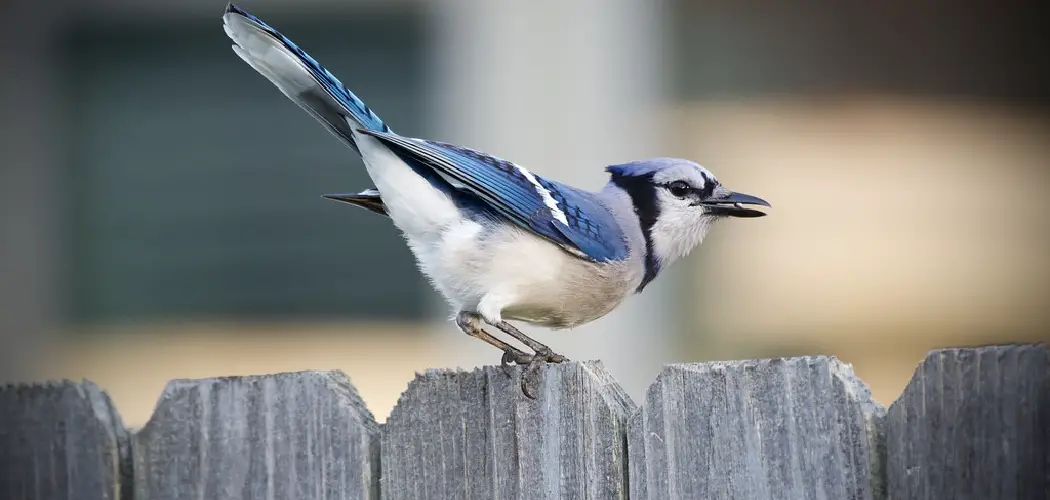Blue jays are destructive and discouraged bird species in many yards. Their loud calls can be annoying, they destroy plants by digging up their food sources, and they can often be aggressive towards other birds. As long as they don’t risk your yard’s ecosystem, it may be worthwhile to get rid of them.
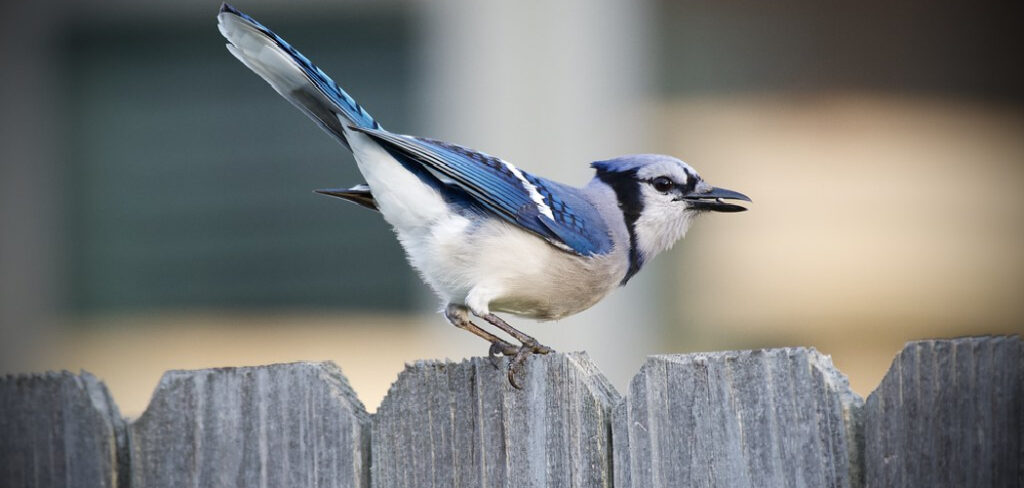
Getting rid of blue jays in your yard can have many advantages. For one, they often eat other birds’ nests or eggs, damaging local bird populations. They also damage gardens and lawns by taking food from them. In this blog post, You will learn in detail how to get rid of blue jays in your yard.
Step-by-step Instructions for How to Get Rid of Blue Jays in Your Yard
Step 1: Inspect Your Property
Take a walk around your yard to identify areas where blue jays have been frequenting and check for signs of damage. Blue jays are attracted to food sources, so minimizing bird feeders or other food sources can help deter them from lingering in your yard. If you have a garden, inspect the plants for signs of damage due to blue jays stealing or destroying them.
Step 2: Implement Deterrents
Scare away blue jays with deterrents like scarecrows, rubber snakes, and noises such as clapping your hands or whistling. Additionally, hang reflective items in your yard, such as aluminum pie pans, or old CDs, to scare away the birds.
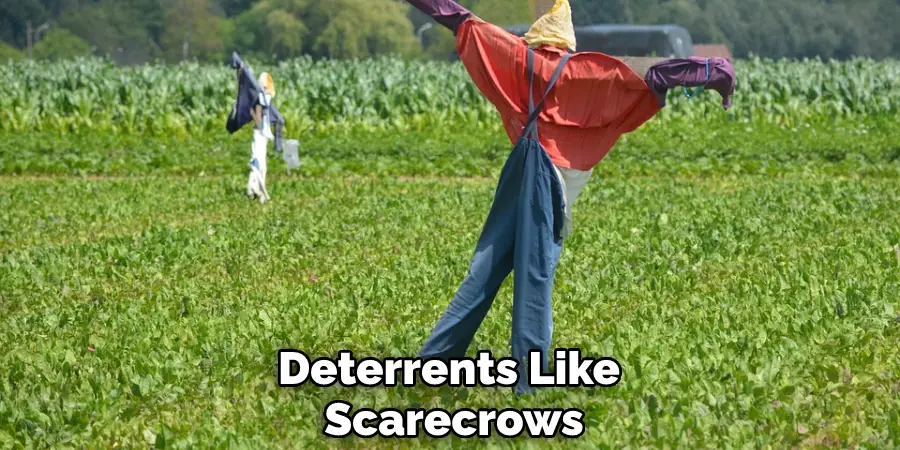
Cover bird feeders with a netting sheet to make it difficult for the bluejays to access food. Change the position of the bird feeder or place it in a location that is less accessible to birds, such as high up on branches of trees.
Step 3: Trim Trees and Bushes
Trim the trees and bushes around your yard that may provide shelter for bluejays. Make sure to trim branches near windows or other access points, as these can provide easy entry points for birds. Plant native plants in your yard, such as shrubs, vines, flowers, and grasses, which can provide food and resources for native birds and discourage the presence of bluejays.
Step 4: Install a Birdhouse
Install birdhouses in your yard to attract native birds and encourage them to stay away from areas where bluejays tend to frequent. Spray repellents around the perimeter of your yard to help keep bluejays away. Various bird repellents are available in home improvement stores or online. Make sure to follow the directions on the product carefully.
Step 5: Install Netting
Install netting or mesh fabric around certain areas of your yard that may provide food or shelter for blue jays. This can help to keep the birds from entering these areas. Cover up window sills with netting or mesh fabric to make it more difficult for blue jays to enter your home through open windows.
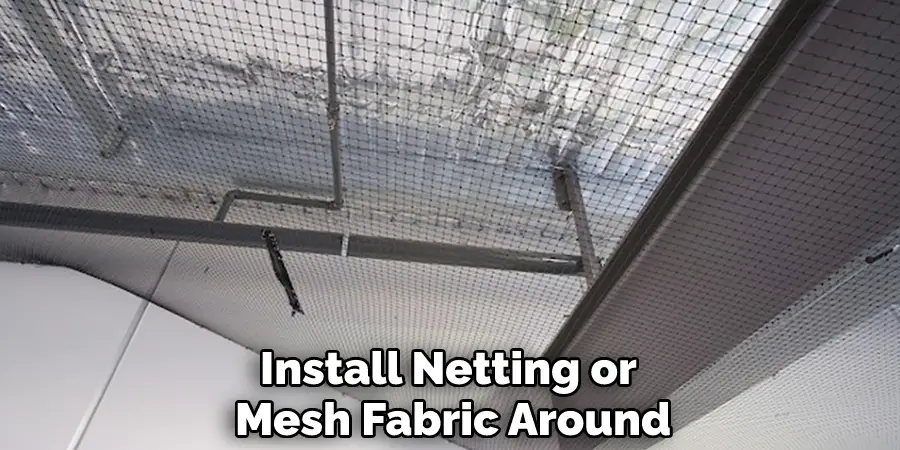
Step 6: Contact a Professional
If you find that none of these methods are working, it may be time to contact a professional bird control company. They can provide additional advice and help create a custom plan for your yard to keep bluejays away for good.
By taking these steps, you can get rid of blue jays in your yard and enjoy a space that is free from their pesky presence. With time, patience, and the right strategies, you can ensure that your space remains safe and enjoyable for everyone.
Safety Tips for How to Get Rid of Blue Jays in Your Yard
- Never attempt to remove a bird from your yard physically – this can be dangerous for both of you and illegal in some areas.
- Make sure to feed the birds away from your home or garden. If birds are attracted by food, they’re more likely to linger around and cause a nuisance.
- Place bird feeders, water dishes, and other attractions out of sight of windows or doorways. Blue jays may become aggressive if they feel threatened by large figures nearby.
- Install a bright-colored banner or flag near the area where blue jays are loitering to scare them away with the movement of the banner.
- Install a scarecrow or owl decoy to frighten away blue jays from your yard and garden.
- Install nets over fruit trees, plants, and crops that you don’t want the blue jays eating from.
- Place bird netting over outdoor gardens and flower beds to protect them from bluejays.
- Use distress calls and noisemakers to startle blue jays away from your yard, but be aware that this can be noisy and may also disturb neighbors.
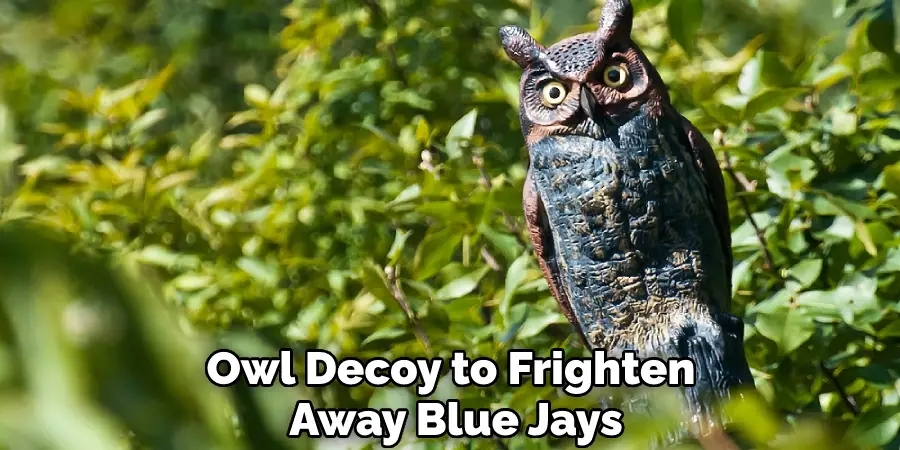
Following these safety tips will help you eliminate bluejays in your yard while keeping you and the birds safe. Remember that blue jays, and all wildlife, are protected by state laws and should be treated with respect.
Are There Any Legal Methods of Removing or Deterring Blue Jays?
Yes, you can use several legal methods to remove or deter bluejays from your yard. The most common and effective methods involve using a variety of bird repellents and scare tactics. One option is to use motion-activated sprinklers that shoot water when the birds enter your yard. These devices work by startling the birds, forcing them to relocate.
You can also hang fake owls and other predators around your property to scare the blue jays away. You can also try using bird-repellent sprays or granules containing chemicals such as capsaicin, a compound in chili peppers. These products create an unpleasant smell or taste that blue jays are less likely to come into contact with.
Finally, you can use sound deterrents such as audio recordings of hawks or other predators to scare the birds away. You can also place a wind chime in an open area of your yard to create a loud noise when the wind blows. Both of these options can be used to remove or deter blue jays from your yard effectively.
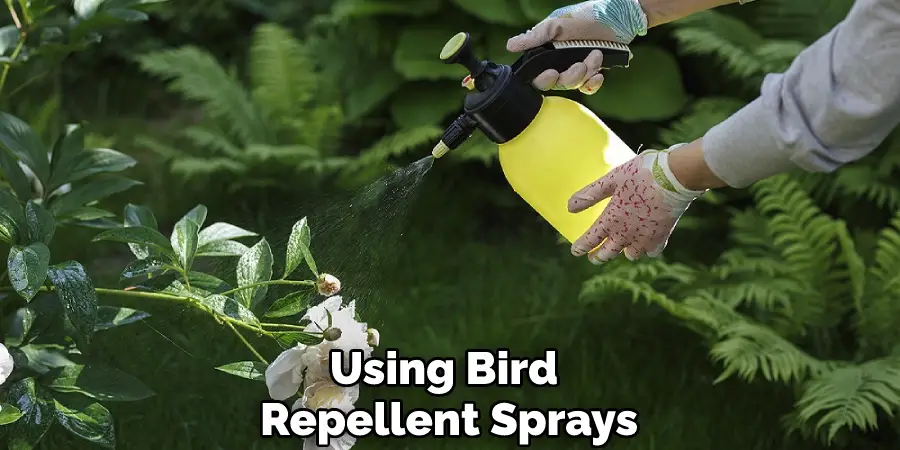
How Long Should You Keep Up the Deterrents Before Expecting Results?
Being patient and consistent when trying to get rid of blue jays from your yard is important. How long you should keep up the deterrents will depend on the individual bird’s behavior, but it can take several weeks for results to become evident.
As long as no new food sources are being introduced into your yard, the deterrents should eventually take effect, and the birds will cease visiting. Once this happens, it is important to continue with the deterrents for at least a few weeks to ensure that the results are long-term.
In some cases, blue jays may be harder to convince than others, so you might need to experiment with different methods. If one method does not work, it is important to try something else to ensure the birds are eventually deterred.
Additionally, if you have other birds in your yard, such as robins or sparrows, they may still attract bluejays, so it is important to use deterrents that target all bird species equally. With persistence and a little patience, you should eventually be able to get rid of blue jays from your yard for good.
How Can You Prevent Blue Jays From Coming Back?
- Remove attractive food sources such as bird seed, pet food, and open garbage cans. Blue Jays are attracted to these areas because of the abundance of food.
- Cover outdoor trash cans or compost bins with a tight-fitting lid. This will help prevent the birds from foraging in your yard for easy meals.
- Install outdoor netting, hardware cloth, or bird spikes around vulnerable areas of your yard, such as balconies and patios. These materials will make it difficult for the birds to land in these areas.
- Plant shrubs and bushes that produce berries or fruits that Blue Jays don’t find attractive. Native species like elderberry, hawthorn and holly are a good choices.
- Hang shiny objects such as old CDs or mirror strips from trees in your yard to scare away the birds. The reflections of light will deter them from returning.
- Place a scarecrow or fake owl in your garden to discourage Blue Jays from nesting.
- Use bird repellents, such as audible and ultrasonic devices, to keep the birds away from your yard. Repellents come in various forms, such as sprays or granules containing natural ingredients that are safe for wildlife and humans.
By following these simple steps, you can effectively keep Blue Jays away from your yard and prevent them from returning. Doing so can help protect your garden, trees, and other plants from damage caused by these birds.
How Do You Clean Up After a Blue Jay Infestation in Your Yard?
- Start by removing any food sources that may have attracted the blue jays to your yard in the first place. This includes bird feeders, pet food, and open trash cans.
- Cut away any branches or shrubs from trees near your house or other structures to reduce the amount of cover for the birds.
- Make sure to cover any outdoor trash cans with a tight-fitting lid and keep pet food indoors if possible.
- Put up barriers such as netting, plastic sheeting, or bird spikes on ledges, windowsills, and other areas they may be nesting to discourage the birds from returning.
- Place a decoy owl or hawk in your yard to scare away the birds, though this may not work for all species of bluejays.
- If all else fails, you can always contact a professional pest control service to remove the birds from your property.
- Regularly clean up any bird droppings in your yard with a disinfectant solution to prevent the spread of disease.
- Finally, keep an eye out for any more blue jays that may be flying around and take proper steps to remove them quickly. This will help prevent any further infestations from taking root in your yard.
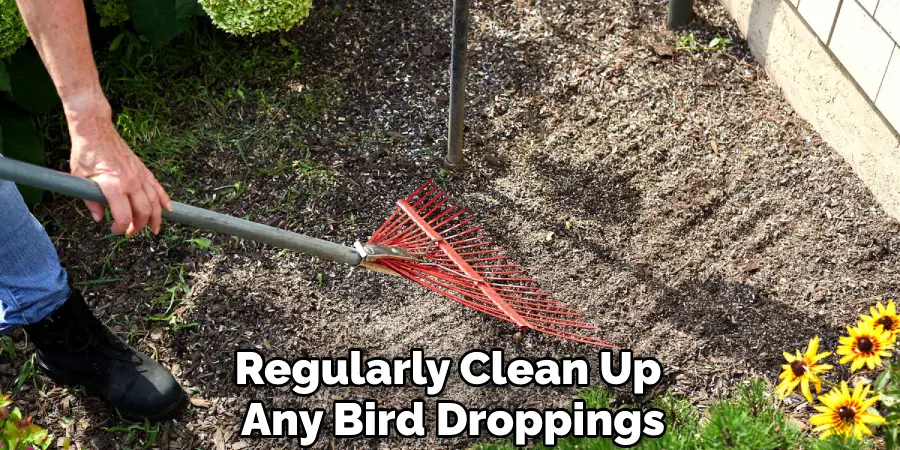
By following these steps, you should be able to get rid of blue jays in your yard successfully. With a bit of dedication and effort, you can ensure that your property is once again safe from these pesky birds.
Conclusion
In conclusion, removing blue jays in your yard can be daunting, but it is certainly possible. Scare tactics, such as hanging reflective objects and using sound-emitting devices, as well as natural repellents, like predator scents or netting, can all help to deter these birds from invading your space.
If you follow these tips and practice patience, you should eventually be able to reclaim your yard and enjoy it without the disruption of bluejays. I hope reading this post has helped you learn how to get rid of blue jays in your yard. Make sure the safety precautions are carried out in the order listed.

